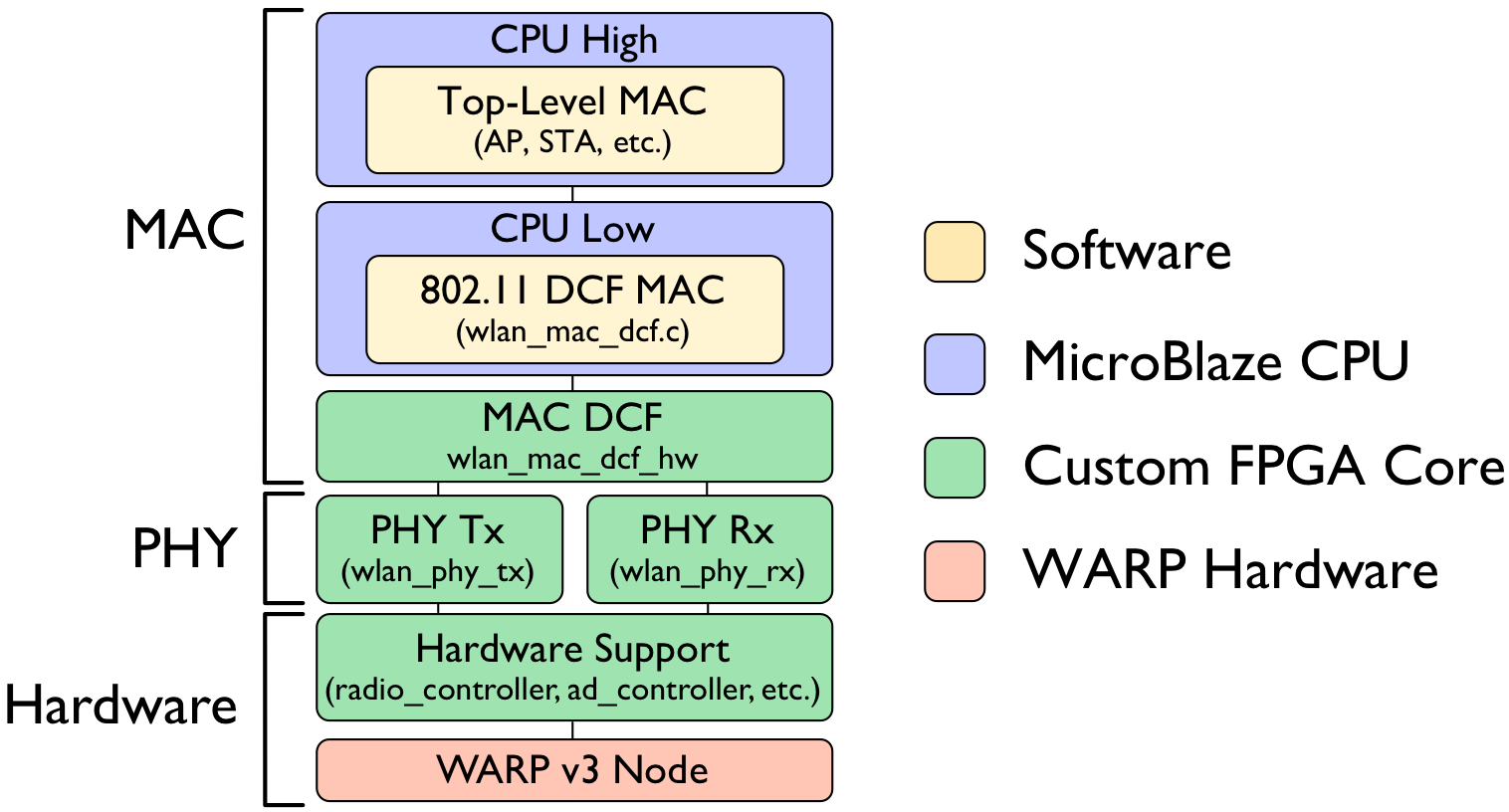
- Vhdl modeling of wifi mac layer for transmitter and receiver module how to#
- Vhdl modeling of wifi mac layer for transmitter and receiver module install#
- Vhdl modeling of wifi mac layer for transmitter and receiver module software#
- Vhdl modeling of wifi mac layer for transmitter and receiver module code#
- Vhdl modeling of wifi mac layer for transmitter and receiver module series#
The name, LoRa, is a reference to the extremely long- range data links that this technology enables. The resulting value varies between 0 (0% duty cycle of approximately 0 volts) and 255 (100% duty cycle of approximately 5 volts).LoRa is an RF modulation technology for low-power, wide area networks (LPWANs). Some of the pins of the Arduino board support the PWM (pulse with modulation) pins, namely pins (3, 5, 6, 9, 10, 11). The values start at 0 (for 0 volts) and 1024 (for 5 volts). When the input from the analog pin is set as INPUT, we can read the input voltage. "It means we use pin 7 on Arduino as output."Įven though the Arduino is a digital machine, it can also be used to operate analog (with a few tricks). Used to set pin mode, Pin is the pin number you want to use (pin 0 to pin 19).
Vhdl modeling of wifi mac layer for transmitter and receiver module code#
Used when we want to code a value multiple times. For the Hub / Switch function, which is responsible for connecting a local network with a wireless network.Access settings based on physical address or MAC address.Features Wi-Fi Protected Access (WPA) and Wired Equivalent Privacy (WEP).Which is where there are transceivers / transmitters and antennas for signal transmission and signal receivers / receivers from and to clients for access.
Vhdl modeling of wifi mac layer for transmitter and receiver module series#
a point from which an IT administrator can view, deploy, configure, and secure a Wi-Fi network as a single divice rather than a series of separate access point configurations.Īn access point is a wireless device that uses a wifi network. The selected access point includes the Grouping feature. Newer models are also compatible with Power over Ethernet Plus, or PoE + (Ethernet and power cable combination), so there is no need to run separate power lines or plug a power outlet near the access point.Īdditional standard features include Captive Portal and Access Control List (ACL) support, so you can restrict guest access without compromising network security, as well as easily manage users on your Wi-Fi network. However that is only one of the advantages of using this network enhancer, consider the following points:Ī business class access point can be installed anywhere you can run an Ethernet cable. On 60 simultaneous connections, the access point gives you the freedom to measure the number of supported devices on your network. When you have employees and guests connected to desktops, laptops, cell phones, and tablets, the 20 devices on the wireless network add up quickly. Advantages of Using a Wireless Access Point ? As they move around the building, their devices move seamlessly from one access point to the next without disconnecting they won't even notice that they are switching between networks. By installing Access points throughout the office, users can roam freely from room to room without experiencing network disturbances. Depending on the number of devices you are connecting at the same time, the range extender can overload your connection.Īccess points, on the other hand, can each handle more than 60 connections simultaneously. Although range extensions increase the Wi-Fi router coverage, they do not increase the available bandwidth. This is because they can only support a limited number of devices at a time, usually not more than 20.

While range extensions are great for home Wi-Fi networks, they are not efficient for modern businesses. Why are Access Points Better for Business?

Vhdl modeling of wifi mac layer for transmitter and receiver module install#
For example, if you want to enable Wi-Fi access in your company's reception area but don't have a router within range, you could install an Access point near the front desk and run an Ethernet cable through the Access Point itself back into the server room. The access point connects to a wired router, switch, or hub via an Ethernet cable, and projects a Wi-Fi signal over a designated area.
Vhdl modeling of wifi mac layer for transmitter and receiver module software#
Software supporting and frequently studied include:Īnd there are many more that can be used depending on the user or programmer familiar with which language is often usedĪn access point is a device that creates a wireless local area network, or WLAN, usually in an office or large building. Computer vision is often used to detect faces in images, recognize facial expression recognition and in practice is often used in common with artificial neural networks. Examples of some applications that use computer vision such as, navigation tools, and controllers.
Vhdl modeling of wifi mac layer for transmitter and receiver module how to#
In the discipline of technology, computer vision works out how to make theories and models work for the development of systems on computer systems. The information extracted from the image can be different data, such as the sequence of the course of the video, the intesity of light, or the perspective of different angles of the image. 8 In disciplines, computer vision deals with the theories behind artificial systems that extract information from images. Computer vision is also described as a technology to automate and integrate various processes and representations to produce vision prestige (Dana H.


 0 kommentar(er)
0 kommentar(er)
